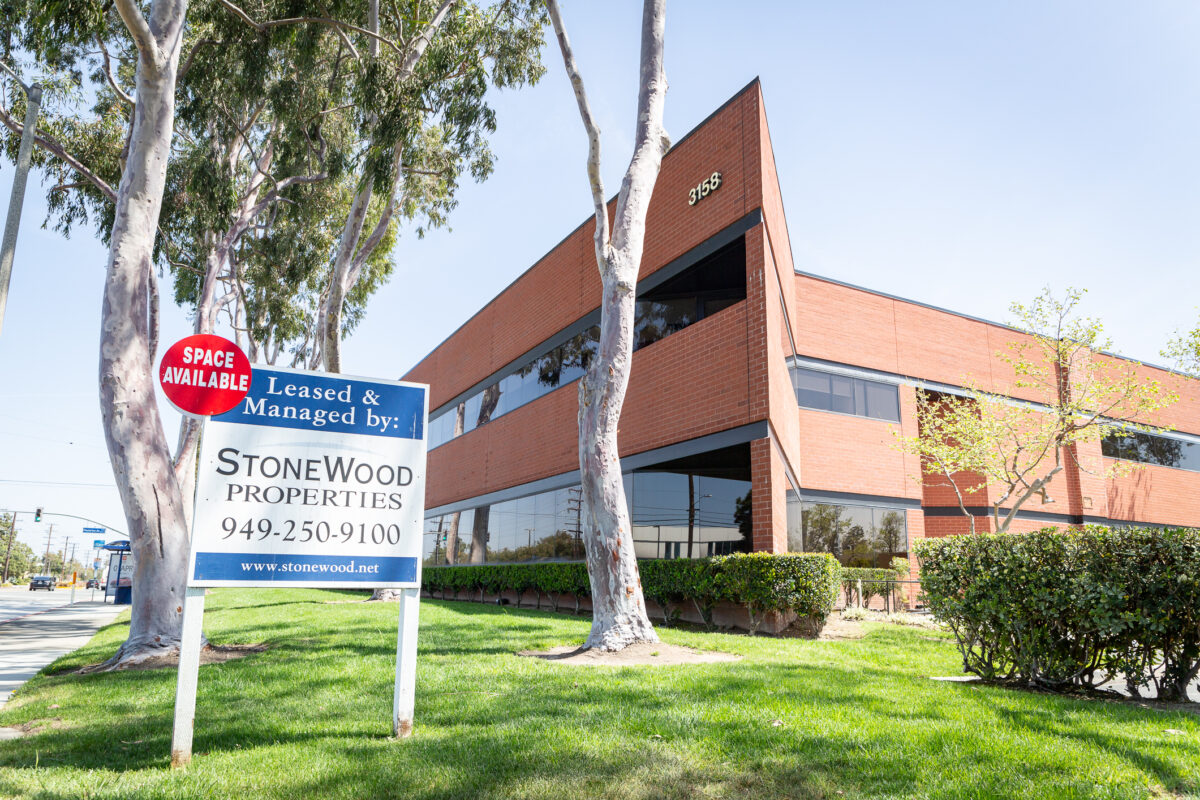News Analysis
A storm is brewing in the U.S. commercial real estate market, says Charles Munger, vice chair of Berkshire Hathaway.
During an interview, the 99-year-old legendary investor told the Financial Times that U.S. banks have plenty of “bad loans” and will be vulnerable when the “bad times come” and commercial property prices crater.
“It’s not nearly as bad as it was in 2008. But trouble happens to banking just like trouble happens everywhere else,” Munger said.
“A lot of real estate isn’t so good anymore,” he added. “We have a lot of troubled office buildings, a lot of troubled shopping centers, a lot of troubled other properties. There’s a lot of agony out there.”
With the banking system facing immense uncertainty, there have been widespread fears that the commercial property sector is the next shoe to drop in the current financial turmoil as it faces a perfect storm of rising interest rates, declining occupancy levels, and a tsunami of loan refinancing.
But do the data and industry experts support Munger’s warning?
The Health of Commercial Real Estate
In recent months, market experts and many Wall Street giants have been ringing alarm bells surrounding the health of commercial real estate (CRE).
“The CRE industry is very vulnerable right now,” Adam Robbins, a strategic real estate advisor at Real Estate Bees, told The Epoch Times, adding that rising interest rates are creating a distressed environment because they have “put many property owners at risk with short-term loan maturities.”
“Owners who need to refinance may find it difficult if they do not have adequate equity or the necessary cash to make up any shortfall,” he said.
Many of the commercial loans set to expire this year originated about 10 years ago when interest rates were much lower than where they are now. As a result, industry observers note that borrowers would need to see higher rent levels or an increase in valuations to service their debts.

One of the early warnings came from Lisa Shalett, Morgan Stanley’s wealth management CIO, writing in a research note that more than half of the $2.9 trillion in commercial mortgages will be renegotiated over the next 24 months “when new lending rates are likely to be up by 350–450 basis points.”
UBS economists expect approximately $1.2 trillion of the outstanding $5.4 trillion in CRE debt will “mature” and be up for refinancing.
“Rising interest rates, a slowing economy, and increasing vacancy rates in office buildings have weighed on the sector in the last couple of years,” UBS stated in a report. “Now, an expected credit crunch on the back of rising cost of funding for banks may further compound its troubles.”
With the growing odds of defaults and delinquencies and the number of loans poised to mature, there is debate if the collapse of the CRE market could create a contagion event that would spread beyond financial institutions and landlords.
“Coupled with the fact that banks are tightening their lending policy in response to the recent turmoil, commercial real estate is in a precarious position,” Moody’s Analytics wrote in a report. “However, this time around, banks are in a better position to handle the issue. A decade of regulatory reforms and generally more conservative underwriting at the lending level have held CMBS delinquency rates well below 2 percent and will hopefully keep delinquency rates low.”
Howard Marks, the co-founder of Oaktree Capital Management, anticipates defaults on office building mortgages and other CRE-related loans. However, the verdict is out on “what the magnitude will be.”
The Swiss bank UBS is penciling in defaults, but it believes “CRE exposure at banks is currently manageable with potential loss levels even in a hard landing scenario.”
Overall, commercial property prices are projected to plunge as much as 40 percent, “worse than in the Great Financial Crisis,” Shalett projected.
Moving forward, this will be an issue that the finance sector will be forced to confront over the next two years, according to Jeffrey Fine of Goldman Sachs’ Asset & Wealth Management.
“We’ve got a big right-sizing in the market that we’re going to have to confront that is going to be the talk of the next six to 12 to 18 to 24 months in our space,” he said.
Bad News for Small Banks?
Stress in the commercial real estate sector could not come at a worse time for the banking system.
Three of the four largest bank failures in U.S. history occurred in just two months, and there could be more distress in the coming months amid elevated interest rates.
Within the confines of CRE, the chief concern is that small banks could be devastated by a collapse of the commercial property market, particularly in the office sector.
Citigroup data show that small lenders account for 70 percent of CRE loans. A separate JPMorgan Private Bank report highlighted that smaller institutions hold about four times more exposure to CRE loans than their larger counterparts.
“Within that cohort of small banks, CRE loans make up 28.7 percent of assets, compared with only 6.5 percent at big banks,” the JPMorgan report stated. “More worrying, a significant percentage of those loans will require refinancing in the coming years, exacerbating difficulties for borrowers in a rising rate environment.”
This is something that will play out slowly and unfold over a period of many years, says Lotfi Karoui, an economist at Goldman Sachs Research.
“History would tell you that losses play out over many years,” Karoui said. “They don’t materialize instantaneously.”
The Rise of ‘Zombie Offices’
The coronavirus pandemic might have permanently changed the commercial real estate market.
Major urban centers and mid-size American cities are being overtaken by “zombie offices,” says Richard Rubin, the CEO of commercial real estate management firm Repvblik.
“This is the phenomenon where an office tower or suite sits unused, but continues to operate,” Rubin told The Epoch Times. “It’s currently happening in cities from Los Angeles to New York and all states in between, including Michigan, Nebraska, Minnesota, and more.”
The national office vacancy rate surged 20 basis points year over year, to nearly 17 percent in March, according to CommercialEdge’s National Office Report in April.
Cushman & Wakefield, a commercial real estate services company, estimates that more than 300 million square feet of U.S. offices will be obsolete by 2030.
In June 2022, a joint paper by New York University and Columbia University researchers projected that if remote-hybrid work partners become the norm, then office-building values could crater by $500 billion by 2030.
Rubin and many of his industry colleagues think that this will be viewed as an opportunity to reuse and convert these office establishments into residential housing options in the future.
It is not only office space that is being unused. Traditional brick-and-mortar stores are also becoming increasingly empty, says Joe Fairley, the vice president of business development at Laser Facility Management.
“We do have other changing characteristics of the commercial real estate market, such as many traditional retailers failing, with many saying they will close locations, such as Amazon, Bath & Body Works, Foot Locker, and even Walmart. Others are simply going into bankruptcy, such as Party City, Bed Bath & Beyond, and others. There is even talk about Dollar General constricting in the near future,” he told The Epoch Times.
Working from home has been one of the chief contributors to CRE’s demise.
A March 2023 Pew Research Center survey learned that 35 percent of workers with jobs that can be done remotely are working from home all the time, up from just 7 percent before the public health crisis. Another third of people who are currently working from home most of the time report wanting to do so permanently if they had a choice.
Seventy-seven percent of employed job seekers say remote work is important when looking for employment opportunities, according to a recent Career Builder poll.
WFH Research, a data-collection project, recently estimated that about 30 percent of all work completed in January happened at home.
Many hiring managers reveal that it is hard to find employees when one of the requirements is in-office work. Human resources experts say that companies mandating in-office work could lose out on 70 percent of candidates.
Ultimately, could the commercial real estate market be harder to revive if companies keep their remote work policies intact and no longer require as much square footage as they did before?

















































